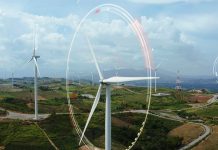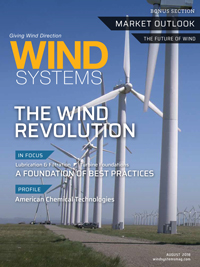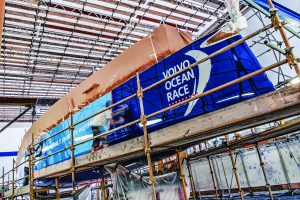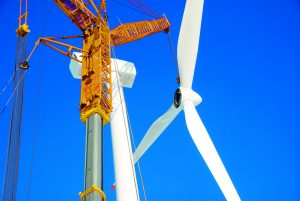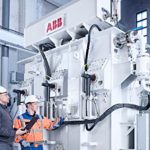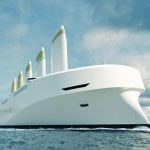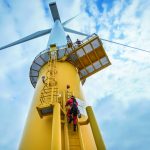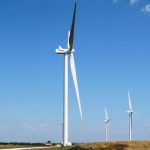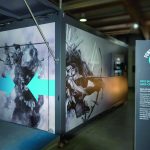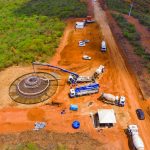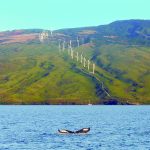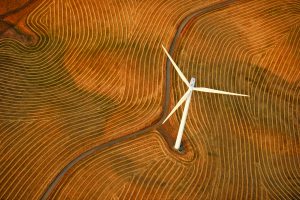An important process to get newly designed wind turbines up and spinning rests in the design phase.
Blade development can be a slow, arduous process lasting many months, but Sandia National Laboratories recently led an effort to cut more than year off that crucial R&D time by using 3D printing.
“This project showed that 3D printing has a really viable use in making tooling for complex shapes that may be time-consuming and difficult to make in other ways,” said Josh Paquette, mechanical engineer at Sandia National Laboratories.

This was a partnership between Sandia National Laboratories, Oak Ridge National Laboratory, TPI Composites, as well as the National Renewable Energy Laboratory where some structural testing of the first prototype was done. And then at a higher level, the project was a partnership between two offices of the U.S. Department of Energy — the Wind Power Technology Office and the Advanced Manufacturing Office.
Proving the tech
The Sandia project was originally developed to scale down a large wind-turbine rotor to a smaller size in order to prove out new technology as well as validate computer models, according to Paquette. As part of that project, Sandia was designing a new rotor that would go on the test machine.
“We had the opportunity to work with Oak Ridge National Laboratory and TPI Composites to manufacture the molds for the blade in a different way using 3D printing,” he said. “And so, typically, we would have the mold made by the manufacturer, and that would involve making a plug or a geometric representation of the blade. And for that positive mold, we would make a negative mold which then the blade could be produced out of. This is a time-consuming process, and often a lot of labor is involved in doing that. What 3D printing does is allow you to skip the first step and go directly to making the negative mold by using a 3D printer that you can feed in the exact geometry from your CAD file.”
The geometry for the blades was sent to Oak Ridge where it was modified for use in its 3D printer. That printer uses a combination of ABS plastic and chopped carbon fiber, according to Paquette.

“It’s actually pellets of this material that get put into an extruder, and the extruder heats up the pellets, and then it smashes them down where they need to be,” he said. “It goes around with a print head until it builds up this part.”
Trial-and-error work
This was the first time anything like this had been attempted, according to Paquette, so a lot of trial-and-error work was done before the 3D molding process was perfected.
“Once the final design for how you make the mold was completed, the process to make the pieces was a matter of a few weeks,” he said.
Ordinarily, designing and building the mold alone can take about 16 months. The 3D-printing method is estimated to take three, according to Paquette.
At the time of the project, the blade molds were printed on one of the biggest printers in the world, but now there are larger printers available.
“Even with our small blades, the mold had to be printed in six sections for each surface of the blade for two different surfaces,” Paquette said. “And then those pieces were overlaid with some additional composite material to form an impermeable mold surface. There was subsequently a small amount of machining done to that surface to bring it into the exact tolerances that we needed for the final shape. Once those pieces were completed, they were sent to TPI Composites, who had manufactured a steel frame for the pieces to sit on, and our blades were produced from those molds.”
Reducing production time
The main takeaway from the project is, with the use of 3D printing, the time it takes to go from design to testing is dramatically reduced.
“To make a prototype wind-turbine blade, there’s time spent obviously in the design process but then also the manufacturing of the mold and the building and testing of the prototype; that can take two years or more for the entire process,” Paquette said. “We were looking for different ways that we could shrink different parts of that process in order to speed new technology to market.”

The shortened time element is certainly the main advantage to the 3D-printing process, but it also will allow designers to push their design ideas, since it will take less time to prove their theories.
“When you know that it’s going to take a long time to go from a blade design to final product, you may not want to take as many chances on those because you might not be able to go back and make a lot of changes to the final design,” he said. “If we can speed up the time that it takes to test those out, presumably the designers might be more willing to try some other things.”
There have been numerous innovations in blades in the past decade, according to Paquette. New air foils have been proposed, new material choices, blade couplings that will allow blades to automatically adapt and shed loads after a gust hits the blade, reducing fatigue on the machine. 3D printing can help expedite those innovations.
“Blade designers can have the opportunity to be less conservative in their design choices and try out more new ways to design blades,” he said.
Bigger blades possible
And now that the technology has been shown to work, it can be used on even bigger blade designs, according to Paquette.
“There’s no inherent limitations to scaling this up to larger sizes of blades,” he said. “Larger printers than the one that we used are commercially available and are capable of doing this. This is not something that’s required to be limited to a specialized lab facility.”
Paquette said his team is looking at using 3D printing to create other parts other than blade molds.

“Going forward, 3D printing and additive manufacturing will have applications in a variety of different areas within wind turbines and wind-turbine blades specifically,” he said. “We plan to do more work to see if more parts of the blade can actually be directly printed or manufactured through some of these processes. Maybe not the entire blade itself, but in the near-term, part of the blade.”
Large blade logistics
It also may be possible in the near future to actually make blades onsite, or at least closer to their final destination, according to Paquette.
“The logistics of transporting very large blades is something that’s being studied currently by the Department of Energy,” he said. “Among the options being looked at are on-site or closer-to-site manufacturing by different transportation methods and possibly segmenting the blades into pieces and doing some final assembly on site.”
Paquette said he thinks 3D printing has a promising role not just in tooling for wind blades, but tooling for a variety of other industries that use complex shapes and large sizes. And thanks to the research from Sandia, that information is available for any company to take advantage of.
“We publicly disclosed as much as possible from the project so other people can take it and run with it,” he said.


















